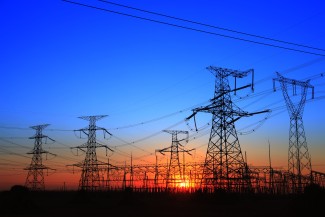Have you ever described efficiency as an energy resource and gotten a quizzical look in return? We have, even though utility system planners have been using energy efficiency for decades to make sure that power for their customers is both reliable and affordable. For those of us who have been in the energy efficiency industry for years, or even decades, we sometimes take for granted that others will understand what we mean. But we must not. We must help educate a wider audience that energy savings from greater efficiency—whether we call them negawatts, an invisible energy source, virtual power plants, or something else—are a cornerstone of our nation’s energy system and critical to a clean and affordable energy future. In fact, energy efficiency is now the third largest resource in the US electric power sector, as shown in a new report we released today.
How we crunched the numbers
Last year we set out to quantify the size of the energy efficiency resource that currently exists in the electric power sector using a bottom-up approach to estimate energy savings achieved through specific policies and programs. We looked at three areas. First, through our State Energy Efficiency Scorecard, we had 10 years of state-level data on evaluated energy savings from utility-sector energy efficiency programs. Second, we used state-level energy savings estimates of appliance efficiency standards from the Appliance Standards Awareness Project (ASAP). And third, we used state-level energy savings estimates of building energy codes from the Pacific Northwest National Laboratory (PNNL).
Energy savings produce huge benefits
The combined impacts of these three major energy efficiency efforts since 1990 amount to a remarkable accomplishment in the US electric power sector. We estimate that not only is efficiency our third largest resource, but, more importantly, it has averted the need to build the equivalent of 313 power plants since 1990. We also estimate that efficiency reduced annual carbon dioxide emissions, a major contributor to climate change, by 490 million tons in 2015. We can see further evidence of efficiency’s impact in the fact that electricity consumption has flattened in recent years even as the economy has grown. What’s more, energy efficiency has saved consumers $90 billion annually on electric bills. For American households, this translates to average savings of $460 per year.
Many more benefits come from investing in energy efficiency. For example, efficiency is especially important for low-income, African-American, Latino, and renting households because it lowers their energy bills over the long term and helps alleviate their disproportionate energy burden (the percentage of household income spent on utilities). Our new report also details other benefits of efficiency such as economic development, job creation, community resilience, and improved health, safety, and comfort.
Energy efficiency could become our number one resource by 2030
We can do much more through energy efficiency in the electric power sector, as ACEEE and others have recently documented. If we increase our application of the three major policies examined in this report (appliance and equipment efficiency standards, utility energy efficiency targets of 1.5% per year, and building energy codes), efficiency could become our nation’s largest electricity resource by 2030, providing one-third of total expected electricity generation needs. These additional energy savings would avoid the need for electrical capacity equivalent to 487 power plants. Combined with the gains since 1990, savings from energy efficiency could amount to the output of 800 power plants by 2030.
State-level policy action is critical to this level of achievement. ACEEE has found that energy efficiency policies can play a major role in each state’s compliance plan for the Environmental Protection Agency’s (EPA) Clean Power Plan, which is aimed at reducing greenhouse gas (GHG) emissions in the electricity sector to limit climate change. Most states could meet at least 25% of their emissions reduction requirement through efficiency policies and the resulting investments, and many could achieve 100%.
Other sectors have huge energy efficiency potential
While this paper tells the story of the efficiency resource in the electricity sector and its emission reduction benefits, there is much more to the story of energy efficiency and climate change mitigation. According to the EPA, the transportation sector accounts for 26.5% of GHG emissions in the United States, followed by industrial (21.4%), buildings (12.4%), and agricultural (9.2%), Efficiency has an important role to play in all of these areas. For example, the transportation sector could potentially reach zero emissions by 2050, with more than half the reductions coming from energy efficiency, including both vehicle and transportation efficiency. The International Energy Agency estimates that energy efficiency will need to account for nearly half of all GHG emission reductions through 2040 to reach a scenario in which the global increase in temperature is limited to 2 degrees Celsius.
We will need major investments and critical support from government, industry, and the nonprofit community to reach these relative levels of energy savings in the US and realize all the benefits they can bring. Just as major policies and commitments in recent decades have helped energy efficiency become our third largest electricity resource today, now we need a new era of visionary policy to create opportunity for future generations.



